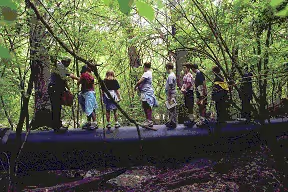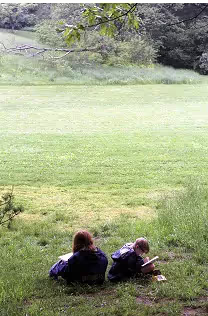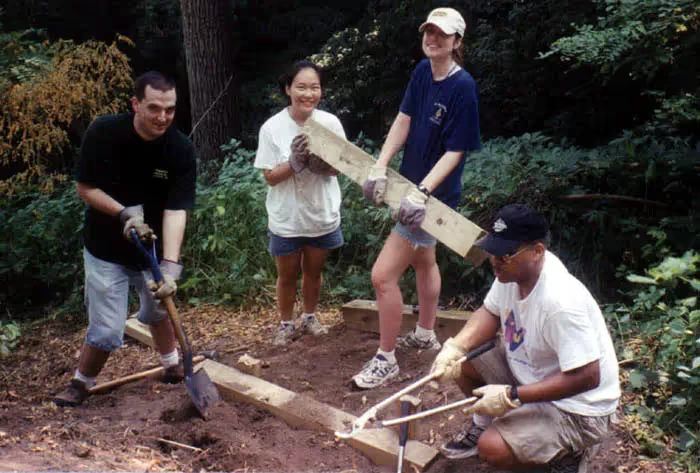A biweekly newsletter with public space news, resources, and opportunities.
A curated dispatch on all things public markets plus the latest announcements from the Market Cities Program.
Please note that these Hall of Shame nominations were written in a moment in time (most over a decade ago) and likely have since changed or even been transformed. If the above entry is now great, or still not so great, go ahead and comment below on how it has evolved or nominate it as a great place.

123 acres of dramatic glaciated topography - steep ravines, rolling hills, and outwash plain - along the Huron River.

The University of Michigan's Nichols Arboretum, founded in 1907, is one of the most valued public spaces in Southeastern Michigan. Located in the heart of the city of Ann Arbor it includes 123 acres of dramatic glaciated topography: steep ravines, rolling hills, and outwash plain along the Huron River. This terrain provides diverse habitats including prairie, oak-hickory woods, and wetland and river floodplain forest. The Nichols Arboretum represents an early public partnership between the university and the city to protect public open space and natural areas for the benefit of both. At the time the Arboretum was established, it was the largest block of protected land in the city and was clearly meant to link to other public open spaces. The city owns about a fourth of the current land area of the Arboretum and proudly emphasizes that it is both a university and community resource. Over the years the city parks and forestry division has shared both expertise and resources with the university to maintain this vital public space.
The Arboretum is easily accessible from sidewalks at three public entrances close to public transit stops and bike paths. Residents of the city often walk to work via the natural paths of the arboretum. It is also within walking distance of the University Medical Center, public and private schools, restaurants, parks and other museums.
The Arboretum is always on the campus and city tour for prospective job candidates. It is a magnificent natural open space that is used as much for an evening stroll after work as it is for a picnic lunch or a commuter footpath to work. It is predominantly maintained by the university but shares resources with the city. The paths support only foot traffic. Vehicles may access the site for maintenance and emergency service. The presence of people at all times of the day and evening speak to the safety and security provided by the university and felt by all who visit.
The Arb, as it is fondly called, is an extremely popular place for formal and informal plant and bird study as well as for casual walks, jogging, family outings, and other activities. It is also the setting for poetry readings, dance and theater performances, art installations and a variety of programs involving university students and community members in restoring urban nature. An arboretum education program, Landscape Explorers, teaches children and families to "read" the landscape and thereby develop an understanding of the importance of the cultural and natural heritage of the places where we live. Landscape Explorers brings children and the adults in their lives outside and into the community through the exploration of landscapes.
Friends often meet here for lunch or a picnic dinner. Particularly when the peonies are in bloom in the historic peony garden originally planted in 1927 or after a snowfall or on a warm summer evening or when the bird migrations begin in the fall and spring. The path that follows the Huron River is especially popular for families with children and pets. Warm summer evenings see young and old enjoying a quite time to read or a vibrant game of frisbee in the meadow.
This is truly the Jewel in the Crown and, as previously stated, is the most popular stop on a visit to the city. The extremely diverse community of Ann Arbor, home of a major university and teaching hospital and within a 45 minute drive of the city of Detroit, interacts with the diverse habitats of the arboretum.
The strong stewardship program under the leadership of Director, Bob Grese, brings together volunteers from local business and community organizations. It is not unusual to see a group of executives from the Ford Motor Company or Toyota of America working together to rebuild trails and remove invasive plants. The bonds built within this unique natural area radiate throughout the community.
In 1906, OC Simmonds (UM 1878) designed the sweeping vistas and intimate coves still evident and enjoyed by more than 100,000 people each year. Simmonds incorporated native plants to emphasize and enhance the Arboretum's rolling topography and breathtaking overlooks.





*Please note that these Hall of Shame nominations were written in a moment in time (most over a decade ago) and likely have since changed or even been transformed. If the above entry is now great, or still not so great, go ahead and comment below on how it has evolved or nominate it as a great place.